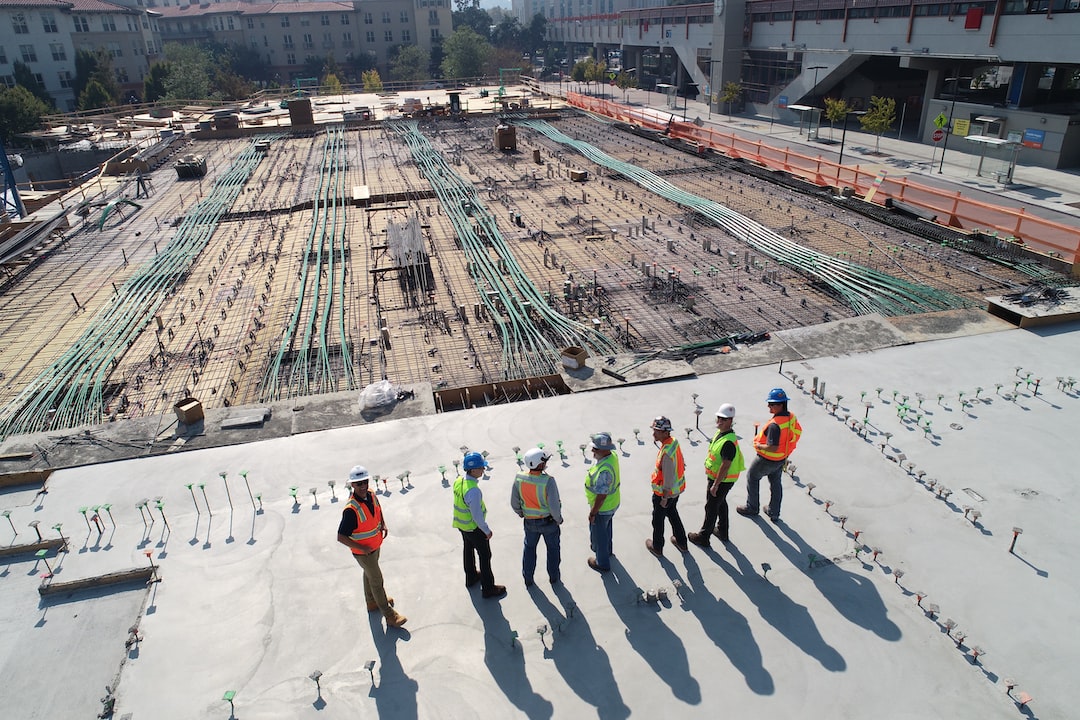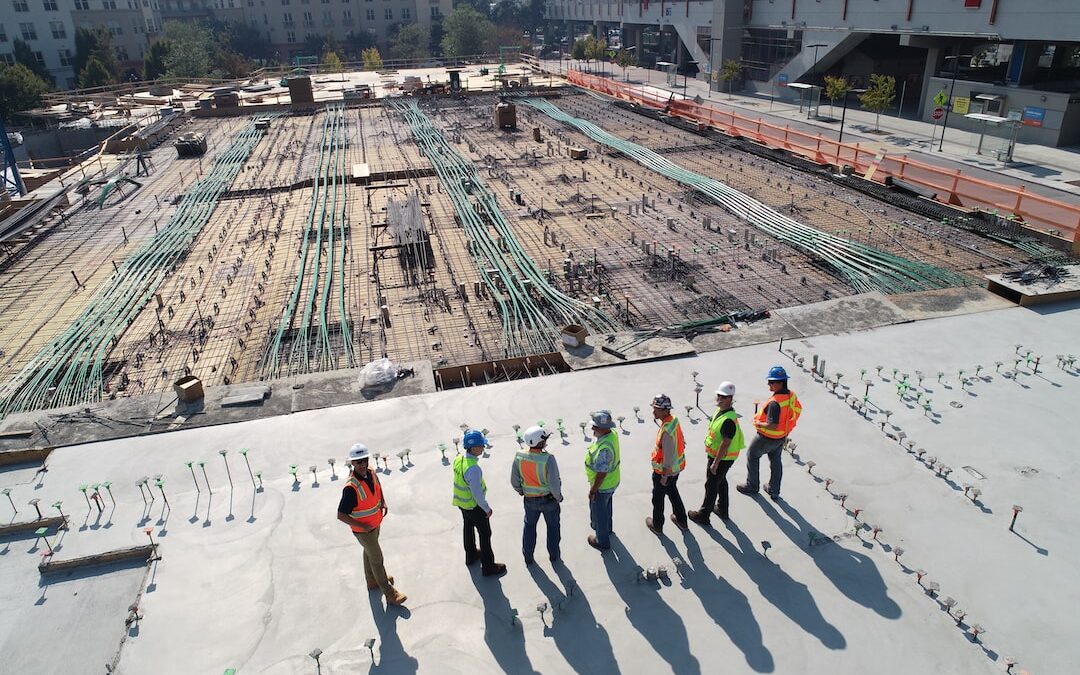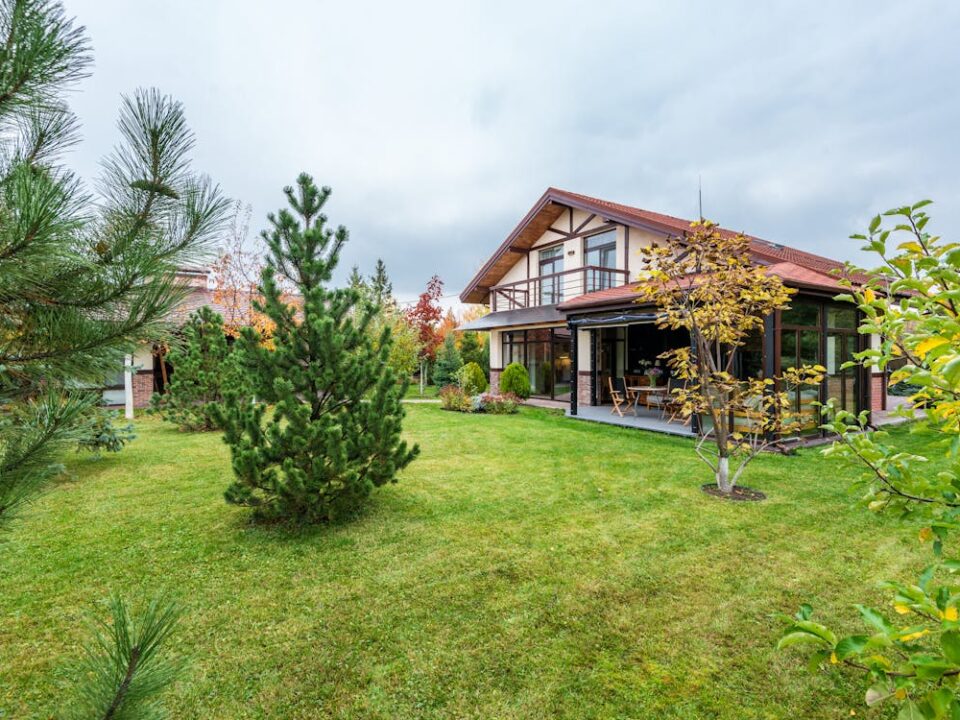

Fall Commercial Landscape Services
August 18, 2022
Patio Maintenance Tips Throughout the Seasons
October 1, 2023Importance of Best Practices for Building a Deck
A well-built deck is essential for several reasons. Firstly, it ensures the safety of those using it. A sturdy deck can withstand heavy foot traffic and provide a secure space for relaxation and entertainment. Additionally, a well-constructed deck adds value to a property, increasing its aesthetic appeal and potential resale value. Moreover, a properly built deck requires less maintenance and repairs, saving homeowners time and money in the long run. Therefore, it is crucial to also prioritize the best practices for building a deck.
Factors to consider before building a deck
Before building a deck, there are several factors that should be taken into consideration. Firstly, it is important to assess the available space and determine the size and shape of the deck. This will depend on the intended use of the deck and the layout of the surrounding area. Additionally, it is crucial to consider the climate and weather conditions in the area, as this will impact the durability and maintenance requirements of the deck. Another factor to consider is the budget, as the cost of materials and labor can vary significantly. Finally, it is essential to check local building codes and regulations to ensure compliance and obtain any necessary permits. By carefully considering these factors, one can ensure the successful construction of a deck that meets their needs and enhances their outdoor living space.
Permits and regulations
When it comes to building a deck, it is important to be aware of the permits and regulations that may be required. Before starting any construction, it is essential to check with your local government or building department to determine what permits are needed for your project. Additionally, familiarize yourself with any regulations or restrictions that may apply to deck construction, such as setback requirements or height limitations. By adhering to these permits and regulations, you can ensure that your deck is built safely and in compliance with the law.
Choosing the Right Materials
Wood vs. composite decking
When it comes to choosing between wood and composite decking, there are several factors to consider. Wood decking offers a natural and traditional look, and it can be more affordable than composite decking. However, wood decking requires regular maintenance, including staining and sealing, to prevent rotting and warping. On the other hand, composite decking is made from a combination of wood fibers and recycled plastic, making it more durable and low-maintenance. It is resistant to rot, fading, and termites, and it does not require staining or sealing. Ultimately, the choice between wood and composite decking depends on your personal preferences, budget, and the level of maintenance you are willing to undertake.
Types of wood for decking
When it comes to choosing the right type of wood for decking, there are several options to consider. One popular choice is pressure-treated lumber, which is treated with chemicals to resist rot and insect damage. Another option is cedar, known for its natural beauty and durability. Redwood is also a popular choice, as it is naturally resistant to decay and insects. For a more exotic look, tropical hardwoods such as ipe and mahogany are great options, although they tend to be more expensive. Ultimately, the best type of wood for your deck will depend on your budget, desired aesthetic, and maintenance preferences.
Evaluating the durability of materials
When evaluating the durability of materials for building a deck, there are several factors to consider. Firstly, it is important to assess the resistance of the materials to moisture and weather conditions. This is crucial as decks are expose to the elements and need to withstand rain, snow, and sunlight. Additionally, the strength and stability of the materials play a significant role in determining their durability. It is essential to choose materials that can support the weight of furniture, foot traffic, and other loads without warping or breaking. Furthermore, considering the maintenance requirements of the materials is vital. Some materials may require regular sealing or staining to maintain their durability over time. Lastly, the lifespan of the materials should be taken into account. Investing in materials that have a long lifespan will ensure the deck remains durable and functional for years to come.
Design Considerations
Determining the deck size and shape
Determining the deck size and shape is an important step in the deck building process. The size and shape of the deck will depend on various factors such as the available space, the intended use of the deck, and the overall design of the outdoor area. It is essential to consider these factors to ensure that the deck fits well into the existing landscape and meets the needs of the homeowner. Additionally, the deck size and shape will also impact the materials required and the overall cost of the project. Therefore, careful consideration should be given to determine the most suitable deck size and shape for a successful deck building project.
Creating a functional layout
When it comes to creating a functional layout for your deck, there are a few key factors to keep in mind. First, consider the purpose of your deck and how you plan to use it. Are you looking to create an outdoor dining area, a space for lounging and relaxation, or a combination of both? This will help determine the size and shape of your deck, as well as the placement of any features such as seating, tables, or a grill. Additionally, think about the flow of traffic and how people will move around the deck. It’s important to ensure there is enough space for easy movement and that the layout allows for comfortable socializing. By carefully considering these factors, you can create a deck layout that is not only functional but also enhances the overall enjoyment of your outdoor space.
Incorporating safety features
When incorporating safety features into your deck, it is important to prioritize the well-being of those who will be using it. Start by considering the layout and design of your deck to ensure that it provides a safe and secure environment. This may include installing sturdy railings, using non-slip materials for the flooring, and adding lighting to enhance visibility at night. Additionally, it is crucial to follow local building codes and regulations to guarantee compliance with safety standards. By taking these precautions, you can create a deck that not only looks great but also prioritizes the safety of everyone who steps foot on it.
Preparing the Site
Clearing the area
Before starting the construction of a deck, it is important to clear the area where the deck will be built. This involves removing any obstacles such as rocks, plants, or debris that may hinder the construction process. Clearing the area not only ensures a smooth and safe construction process but also helps in determining the exact dimensions and layout of the deck. We recommend you to thoroughly inspect the area and remove any potential hazards to create a solid foundation for the deck. Additionally, clearing the area allows for better access to the construction site and ensures that the deck is built in a clean space.
Leveling the ground
Leveling the ground is a crucial step in building a deck. It ensures that the deck is stable and prevents any future issues with the structure. Before starting the leveling process, it is important to remove any vegetation or debris from the area. Once the area is cleared, use a level and a string to determine the high and low points of the ground. This will help you identify where the ground needs to be adjusted. Use a shovel or a rake to add or remove soil as needed to create a level surface. It is important to take your time during this process to ensure that the ground have properly level. Once the ground is level, you can proceed with the rest of the deck building process with confidence.
Addressing drainage issues
When it comes to addressing drainage issues in deck construction, there are several important factors to consider. Proper drainage is essential to ensure the longevity and stability of the deck. One key aspect is the slope of the deck surface, which is design to allow water to flow away from the structure. Additionally, the use of a drainage system, such as a waterproof membrane or a network of channels, can help redirect water and prevent it from pooling on the deck surface. It is also important to consider the placement of downspouts and gutters to ensure that rainwater is directed away from the deck. By addressing drainage issues effectively, homeowners can avoid potential water damage and maintain the integrity of their deck for years to come.
Building the Deck
Installing the support posts
When it comes to installing the support posts for your deck, there are a few key considerations to keep in mind. First, it’s important to choose the right type of support post for your specific deck design and local building codes. This will ensure that your deck is structurally sound and meets all safety requirements. Additionally, be sure to carefully measure and mark the locations where the support posts will install, taking into account any slope or unevenness in the ground. Once the locations are marked, dig holes that are deep enough to provide a solid foundation for the support posts. It’s also a good idea to use concrete footings or post anchors to further enhance the stability of the support posts. Finally, make sure to securely attach the support posts to the deck frame, using appropriate hardware and techniques. By following these best practices, you can ensure that your deck’s support posts are install correctly and will provide a strong and stable foundation for your deck.
Attaching the beams and joists
Attaching the beams and joists is a crucial step in building a deck. This process involves connecting the horizontal beams to the vertical posts and securing the joists to the beams. It is important to ensure that the beams and joists are properly align and securely fasten to provide a strong and stable foundation for the deck. Additionally, using appropriate hardware and following the manufacturer’s guidelines is essential for the structural integrity of the deck. Proper attachment of the beams and joists will ensure the overall safety and longevity of the deck.
Laying the decking boards
When laying the decking boards, it is important to ensure that they are properly align. Start by placing the first board flush against the edge of the deck frame and use a spacer to create consistent gaps between each board. This will allow for proper drainage and prevent moisture buildup. Additionally, be sure to use stainless steel or coated screws to secure the boards in place, as this will help prevent rust and corrosion over time. Finally, regularly inspect the boards for any signs of damage or wear, and replace any boards that are cracked or warped. By following these best practices, you can ensure that your deck will be both beautiful and durable for years to come.
Finishing Touches and Maintenance
Adding railings and stairs
Adding railings and stairs is an important step in building a deck. Railings provide safety and can enhance the overall appearance of the deck. They come in various materials, such as wood, metal, or composite, and can be customize to match the style of the deck. When installing railings, it is important to follow local building codes to ensure proper height and spacing. Stairs provide access to the deck and design with safety in mind. They should have a sturdy handrail, proper tread depth and riser height, and be well-lit. Adding railings and stairs to your deck will not only make it more functional but also increase its value and appeal.
Applying a protective finish
Applying a protective finish is an essential step in building a deck. It helps to protect the wood from moisture, UV rays, and other elements that can cause damage over time. There are various types of protective finishes available, such as stains, sealants, and paints. Before applying a protective finish, it is important to properly clean and prepare the deck surface. This includes removing any dirt, debris, or previous finishes. Once the surface is clean, the protective finish apply using a brush, roller, or sprayer. We recommend to follow the manufacturer’s instructions for the specific product used. Applying multiple coats may be necessary for optimal protection. Reapplication of the protective finish will help to prolong the lifespan of the deck and keep it looking its best.
Regular cleaning and maintenance
Regular cleaning and maintenance are essential for keeping your deck in top condition. By regularly cleaning your deck, you can remove dirt, debris, and stains that can accumulate over time. This helps to prevent the growth of mold and mildew, which can cause damage to the wood. In addition to cleaning, regular maintenance tasks can help prolong its lifespan. By following these best practices, you can ensure that your deck remains beautiful and functional for years to come.
Conclusion
Enjoying your well-built deck
After all the hard work and careful planning, you can finally enjoy your well-built deck. Whether it’s hosting a barbecue with friends, relaxing with a book and a glass of wine, your deck is sure to bring you joy and relaxation. Take the time to appreciate the craftsmanship and attention to detail that went into its construction.
Long-term benefits of a quality deck
A quality deck offers numerous long-term benefits. Firstly, it enhances the overall value of your property. A well-built deck not only provides additional living space but also increases the curb appeal of your home. Secondly, a quality deck is durable and requires minimal maintenance, saving you time and money in the long run. Additionally, a well-designed deck can improve the functionality of your outdoor space. This will allowing you to enjoy outdoor activities and entertain guests comfortably. Lastly, a quality deck can create a relaxing atmosphere, providing a perfect place to enjoy the beauty of nature. Investing in a quality deck is a wise decision that will bring you years of enjoyment. It will also enhance the appeal of your property.
Continued maintenance for longevity
Proper maintenance is essential for ensuring the longevity of your deck. Regular cleaning and sealing can help protect the wood from damage caused by everyday wear and tear. We recommend you to sweep your deck regularly to remove dirt and debris that can accumulate and cause scratches. Additionally, applying a water-resistant sealant every few years can help prevent water damage and keep your deck looking great. By following these maintenance practices, you can extend the lifespan of your deck and enjoy its beauty.




